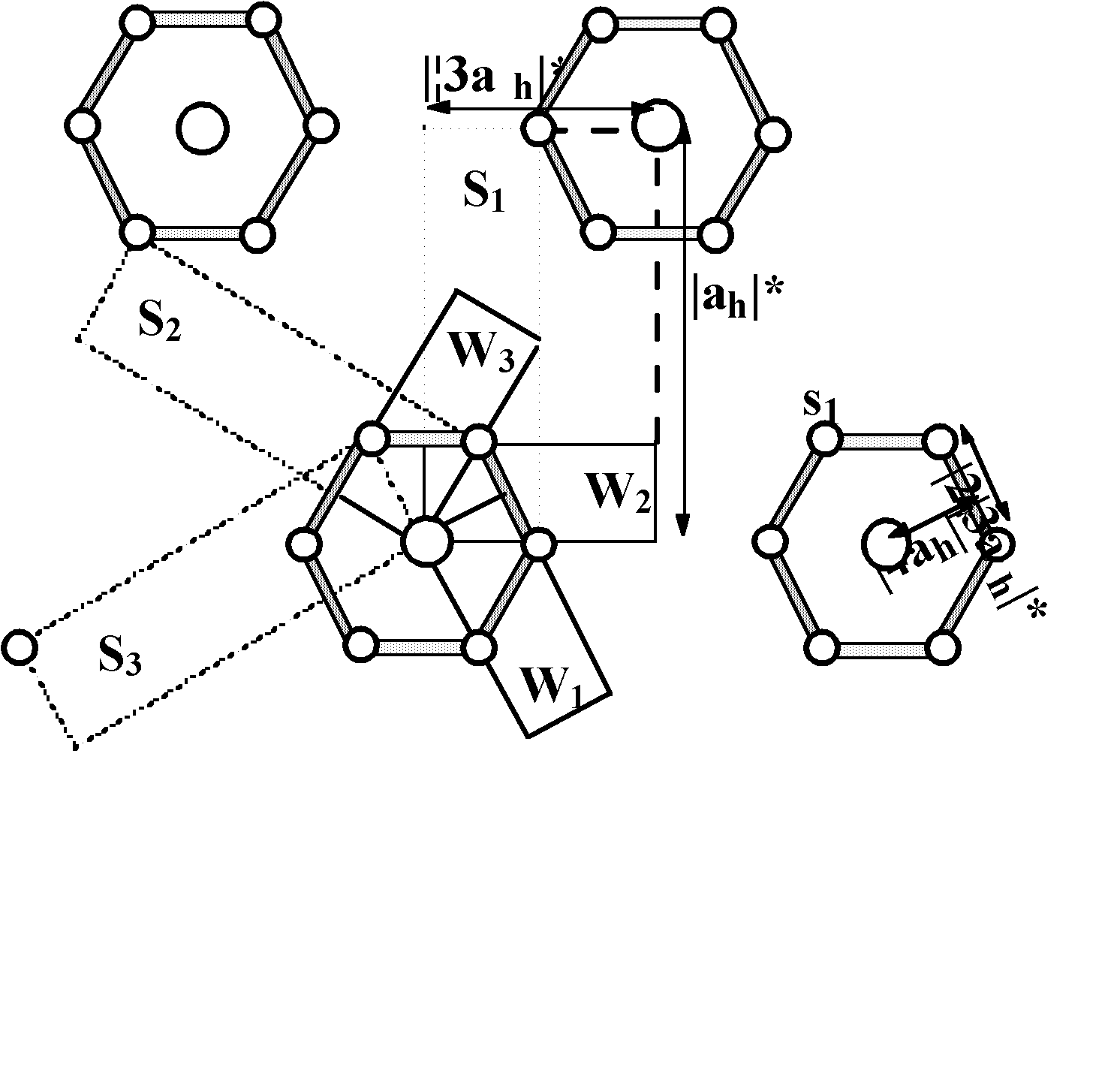
MICRODOMAIN BOUNDARIES AND DIFFUSE X-RAY SCATTERING IN RFe6Ge6 (R=TB, HO, ER) SINGLE CRYSTALS
O. Zaharko, A. Cervellino, M. Estermann, P. Schobinger-Papamantellos
Laboratorium für Kristallographie, ETHZ, CH-8092 Zürich, Switzerland
The diffuse X-ray scattering in the quenched RFe6Ge6 (R=Tb, Ho, Er) single crystals was studied with
precession photographs (R=Ho, Er) and with an imaging plate
detector system using rotation geometry (R=Tb). The observed
diffraction features of all studied single crystals can be
classified into three distinct sets in agreement with [1-3] (see
Figure).

Figure. Schematic bounded projection of the
main h=2n (large circles) and super-structure h=2n+1 (small
circles and diffuse streaks) hkl-layers of RFe6Ge6.
These features originate from a complex twinned microstructure. The main reflections arise from the average structure (YCo6Ge6 type, in orthohexagonal setting: Cmmm, (c, 31/2a, a)h), the s1-satellites - from the superstructure (S) (TbFe6Sn6 type, Cmcm, (2c, 2.31/2a, a)h) which occurs due to ordering of the chains of the R and Ge atoms (guest subsystem) within the hexagonal FeGe framework (host subsystem) and shows submicroscopic twinned domains with three p/3-rotated orientations.
We show that the diffuse streaks arise from the microdomain boundaries (W) which are not simple separation planes between the congruently intergrown S-microdomains, but they form another kind of superstructure (Cmmm, (2c, 31/2a, 4a)h) of YCo6Ge6. The W-boundaries extend along the three preferential orientations {(011)1-2, (01-1)1-3, (010)2-3} refering to the (c, 31/2a, a)h basis.
Coherency of the distant S-microdomains restricts the
distribution and thickness of the S-microdomains and the
W-boundaries. The consequences are in agreement with the
coincidence-site lattice theory. The simulations performed with
the program DISCUS confirmed our conclusions.